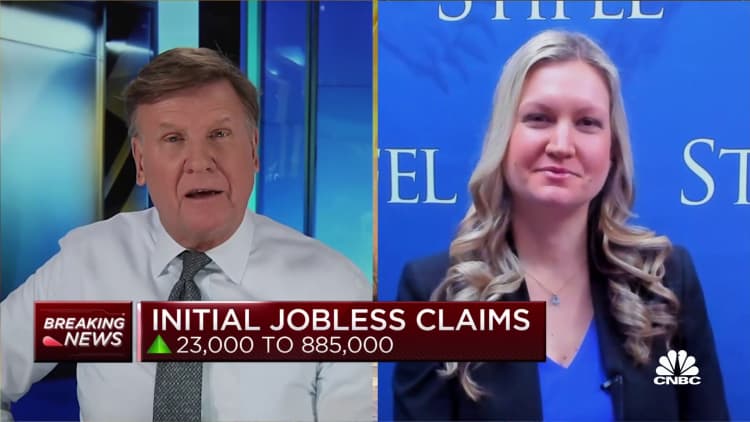Congress finally reached a deal to resume enhanced unemployment benefits, but those who are currently out of work may have to wait a few weeks before they see any bump in their check.
On Sunday, lawmakers agreed to a $900 billion relief package, which includes a $300 boost in unemployment insurance payments and an 11-week extension of the Pandemic Emergency Unemployment Compensation program (PEUC) and the Pandemic Unemployment Assistance program (PUA) that were set to expire at the end of 2020.
PUA unemployment benefits specifically cover small business owners, self-employed Americans, gig workers and independent contractors who are out of work or have significantly reduced hours as a result of the coronavirus pandemic but may not otherwise qualify for support.
Yet while Congress has a deal in place, unemployment benefits for an estimated 12 million people on the PUA and PEUC programs could still lapse, at least temporarily. And if that happens, it typically takes two to three weeks to restart those benefits, according to Michele Evermore.
For millions more who are currently receiving unemployment benefits, there will also be a delay on the extra $300 boost. It will take several weeks for states to actually start rolling out the $300 boost, says Andrew Stettner, senior fellow at the Century Foundation and a leading unemployment expert.
"It won't be as long as last spring because they [already] had the $600 program, but I'd expect between 3 to 6 weeks to be the norm," Stettner tells CNBC Make It, adding that the specific timeframe will vary state to state.
That means it will be well into January before people see the extra $300 hit their unemployment check.
And while the end-of-the-year holidays certainly won't help the states implement these enhanced benefits any faster, Stettner says the timing is only part of the issue. A bigger problem is that state unemployment agencies are already struggling with the volume of requests.
"State unemployment agencies are kind of like a boat that's been taking on water. They try to bail it out, but there's still a hole in the bottom of the boat," Stettner says. "Agencies pride themselves to be able to respond to change the laws, get benefits out quickly, but they've been outmatched."
This new round of enhanced unemployment benefits only offer a $300 a week boost instead of the additional $600 allotted earlier in the pandemic. Sunday's package also only keeps the program afloat for another 11 weeks, through March 14, 2021. That could also pose administrative challenges to states, Stettner says.
Rather than a specific cutoff date, Stettner says a better approach would have been resuming enhanced benefits in early 2021 with some restrictions in place that once unemployment rates hit a certain level, the program starts to phase out.
Yet despite the limited timeframe and the lower amount, Stettner says it was crucial that Congress provided additional unemployment support, in any form. "Adding the $300 [to unemployment payments] is important; it's going to make a huge difference," he says.
Check out: A guide to resources that can help you pay bills now, from rent to health care
Don't miss: Here are the 5 best personal loans of December 2020



